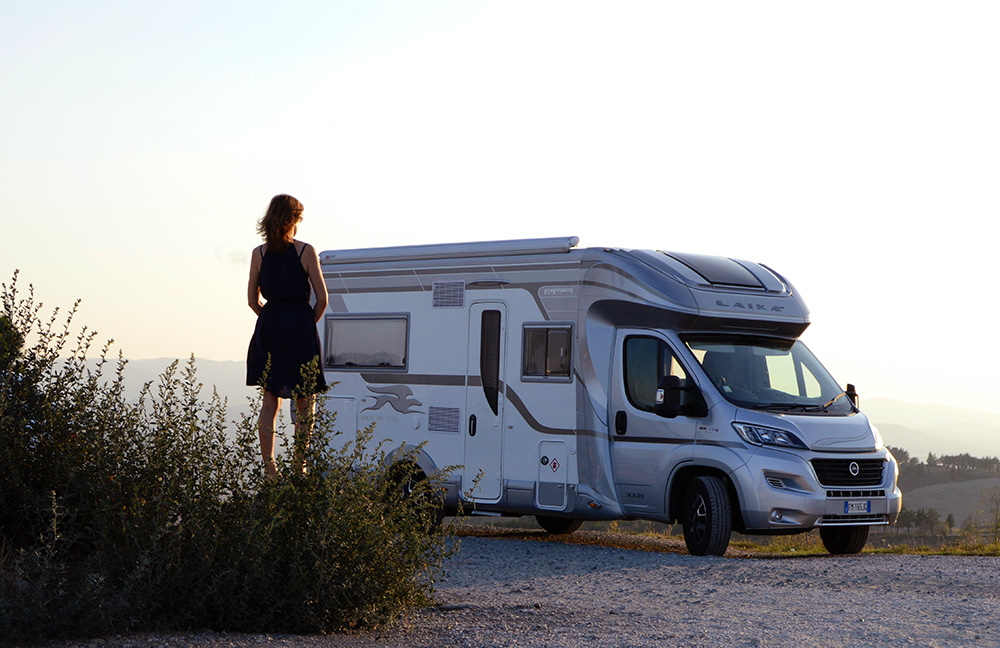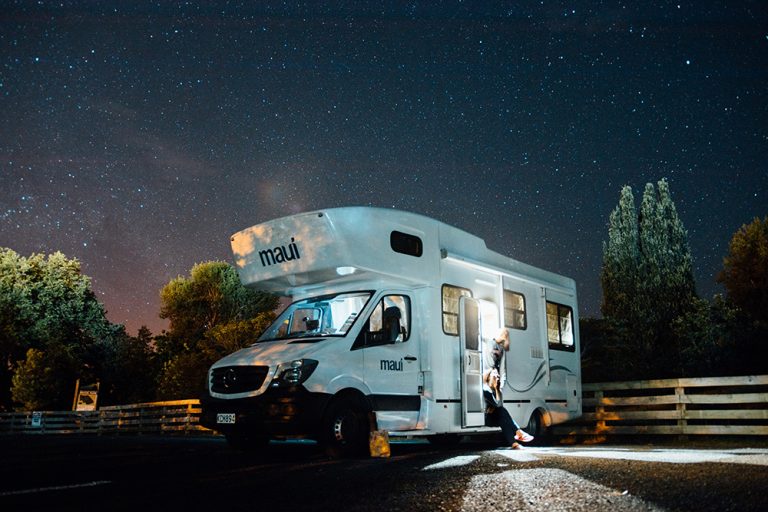Welcome to our blog, where we’ll dive into the world of common motorhome repairs. Whether you’re a seasoned traveler or new to the motorhome lifestyle, it’s crucial to be aware of the potential problems that can arise during your adventures on the open road.
Understanding and promptly addressing these issues is key to ensuring a safe and enjoyable travel experience. In this blog post, we’ll explore some of the most frequently encountered motorhome problems and provide practical solutions to help you overcome them.
From electrical glitches, plumbing hiccups, and mechanical troubles, to exterior damage, we’ve got you covered with valuable insights and step-by-step guidance. So, let’s roll up our sleeves and equip ourselves with the knowledge and skills needed to handle some motorhome repairs and keep things running in top shape!

Looking for Motorhome Repairs around West Michigan?
Electrical Problems:
Diagnosing Electrical Problems:
To diagnose electrical issues in your motorhome, you have two main tools at your disposal: a trusty multimeter and the power of visual inspection. A multimeter is a versatile device that allows you to measure voltage, resistance, and continuity, aiding in pinpointing the root cause of the problem. By following the manufacturer’s instructions for your specific multimeter model, you can test different electrical components, including batteries, fuses, and wiring connections.
Visual inspection is another valuable diagnostic technique. Take the time to carefully examine wiring connections, looking for loose or damaged wires, corroded terminals, or any signs of overheating. These visual cues can provide vital clues as to the source of the problem, helping you determine the most appropriate course of action.
Fixing Common Electrical Problems: Listed below are two very common electrical issues that can be easily fixed at home with basic tools and knowledge!
Replacing a Blown Fuse:
a. Locate the fuse box in your motorhome, usually found in a convenient and accessible area.
b. Identify the blown fuse by checking for a broken filament or a blackened appearance.
c. Using the appropriate replacement fuse with the same rating, carefully insert it into the corresponding slot.
d. Test the circuit to ensure the blown fuse was the root cause of the problem, and everything is functioning as it should.
Troubleshooting Faulty Appliances:
a. Begin by disconnecting the appliance from the power source to avoid any potential hazards.
b. Inspect the power cord for visible damage, such as cuts or exposed wires, and check for loose connections.
c. Using a multimeter, test the appliance for continuity or voltage issues.
d. If you identify any faulty components, repair or replace them as necessary, following the appropriate procedures.
Safety Precautions and Seeking Professional Assistance:
Throughout any electrical motorhome repairs, prioritizing safety is of utmost importance. Always remember to disconnect the power supply before working on any electrical components, and exercise caution to avoid electric shocks or potential fires. If you encounter complex electrical issues beyond your comfort zone or lack the necessary expertise, it is highly recommended to seek professional assistance.

Plumbing and Water System Issues:
Identify Leaking Pipes
One of the most common problems is leaking pipes. These leaks can occur due to aging pipes, loose connections, or damage from freezing temperatures. Identifying the source of a water leak can be a bit challenging, but there are a few telltale signs to watch out for. Look for water stains, dampness, or pooling water near the pipes or fixtures. You may also notice a decrease in water pressure or a constant dripping sound. To fix a leaking pipe, you’ll need to locate the exact point of the leak and determine whether it’s a minor issue that can be fixed with a simple patch or if a pipe replacement is necessary. Tightening loose connections or applying sealant can often rectify the problem.
Motorhome Drain Clog Issues
Clogged drains are another common plumbing issue in motorhomes. They can result from the accumulation of debris, such as food particles, grease, or hair. When drains become clogged, water may drain slowly or not at all, leading to backups and unpleasant odors. To unclog a drain, you can start by using a plunger or a drain snake to dislodge the blockage.
Alternatively, you can try pouring a mixture of hot water and baking soda down the drain to break down the clog. Regular maintenance is crucial to prevent clogs, so be mindful of what goes down your drains and consider using drain screens or filters to catch debris.
Water Flow and Mineral Buildup
Maintaining proper water flow in your motorhome’s plumbing system is essential for a smooth and efficient experience. Regularly inspect the faucets, showerheads, and hoses for any signs of mineral buildup or blockage. If you notice reduced water flow, it may indicate a clog or a problem with the water pressure regulator. Cleaning or replacing clogged aerators and showerheads can often restore proper water flow. Additionally, periodically flushing the water heater and using water treatment products can help prevent mineral deposits from affecting your plumbing system’s performance.
Water pump problems can also arise in motorhomes. The water pump is responsible for pressurizing and distributing water throughout the system. If you experience issues with water pressure or no water flow at all, the water pump might be the culprit. First, check if there is power reaching the pump and ensure that it’s properly connected. If the pump is running but not providing sufficient pressure, it may indicate a clogged inlet filter or a worn-out diaphragm. Cleaning or replacing the filter and diaphragm can often resolve these issues. In some cases, a malfunctioning water pump may need to be replaced entirely. Make sure to consult your motorhome’s manual or seek professional assistance to ensure a proper replacement and to prevent any damage to the system.
Mechanical and Engine Troubles:
Motorhome owners may come across a range of mechanical issues during their adventures on the road. One common problem they may encounter is engine starting difficulties. This can be caused by various factors such as a dead battery, faulty ignition system, or fuel delivery issues. If you’re faced with this problem, start by checking the battery connections to ensure they are clean and tight. If the battery is charged and the connections are fine, the issue may lie with the starter motor or the ignition system, and it would be advisable to seek professional assistance.
Overheating is another concern that motorhome owners may face. It’s important to keep an eye on the engine temperature gauge and take action if it starts to rise excessively. Overheating can be caused by a malfunctioning radiator, a faulty thermostat, or a lack of coolant. Regularly inspect the coolant level and ensure it is at the recommended level. If the coolant level is fine, check for any leaks in the cooling system and ensure the radiator is not clogged with debris. If the problem persists, it’s best to consult a professional mechanic who can diagnose and repair the issue effectively.
Strange noises emanating from the engine can be unsettling for motorhome owners. These noises can indicate underlying problems that require attention. If you notice unusual sounds such as knocking, rattling, or squealing, it’s crucial to investigate further. Start by inspecting the belts and hoses connected to the engine. Look for signs of wear, cracks, or looseness, and replace them if necessary. Strange noises can also be a result of issues with the internal engine components, such as a worn-out bearing or a damaged piston. In such cases, it’s advisable to seek professional assistance to accurately diagnose and resolve the problem.
Performing basic engine maintenance tasks is essential for keeping your motorhome running smoothly. Regularly checking the oil level is one such task. Locate the dipstick, remove it, and wipe it clean before reinserting it fully. Pull it out again and check the oil level. If it’s low, add the recommended oil as per the manufacturer’s instructions. Another important task is replacing the air filters. Consult your owner’s manual to locate the air filter housing and replace the filter if it appears dirty or clogged. Additionally, inspecting belts and hoses for wear, cracks, or looseness is crucial. If you notice any issues, have them replaced promptly to prevent further damage.

Exterior Damage and Body Repairs:
Motorhomes, like any other vehicle, are prone to exterior damage such as dents, scratches, and cracks. These issues can occur due to accidental bumps, collisions, or even harsh weather conditions.
Motorhome REPAIRs: Dents and scratches
Dents are a common problem, but they can often be fixed using some simple techniques. One approach is to use a plunger to create suction and gently pull out the dent. Another method involves using a hairdryer or a heat gun to heat the dented area and then applying quick, controlled pressure to pop it back into shape. For scratches, you can try using touch-up paint that matches your motorhome’s color. Clean the area thoroughly, apply the touch-up paint, and blend it in using a soft cloth. Cracks in fiberglass or plastic exteriors can be repaired using specialized repair kits that include epoxy resin and fiberglass cloth. Follow the instructions carefully to ensure a durable repair.
Repair Minor Motorhome Exterior Damages
When it comes to minor exterior damage, fillers, sanding, and repainting can help restore the appearance of your motorhome. Start by cleaning the damaged area and removing any loose paint or debris. Apply an appropriate filler material, such as body filler or putty, to fill in the damaged area. Once the filler has hardened, use sandpaper to smooth the surface until it is level with the surrounding area. Then, apply a primer to ensure good adhesion for the paint. Finally, carefully paint the repaired area to match the rest of the motorhome’s exterior. Remember to use automotive-grade paint and follow the manufacturer’s instructions for the best results. With patience and attention to detail, you can achieve a professional-looking repair.
Motorhome repairs: Body Work
For more significant body damage, it may be best to seek professional repair services or specialized motorhome body shops. These experts have the knowledge, experience, and equipment necessary to tackle complex repairs. They can assess the extent of the damage, provide accurate estimates, and perform high-quality repairs that meet industry standards. Whether it’s extensive dent removal, fiberglass repair, or panel replacement, professional repair services can ensure that the structural integrity and aesthetic appeal of your motorhome are restored.
Motorhome Repairs Conclusion...
In conclusion, addressing common motorhome repairs promptly is crucial for a safe and comfortable travel experience. By taking proactive measures and regularly inspecting your motorhome, you can catch problems early on and prevent them from escalating. Remember, safety should always be a priority, and seeking professional help when needed ensures that complex issues are properly diagnosed and repaired. If you have any comments or questions, feel free to leave them below. Let’s foster engagement and community interaction, sharing knowledge and experiences to help fellow motorhome owners enjoy their adventures to the fullest. Safe travels!
Check out our Motorhome Repair and Services page to learn more about the services we provide.

